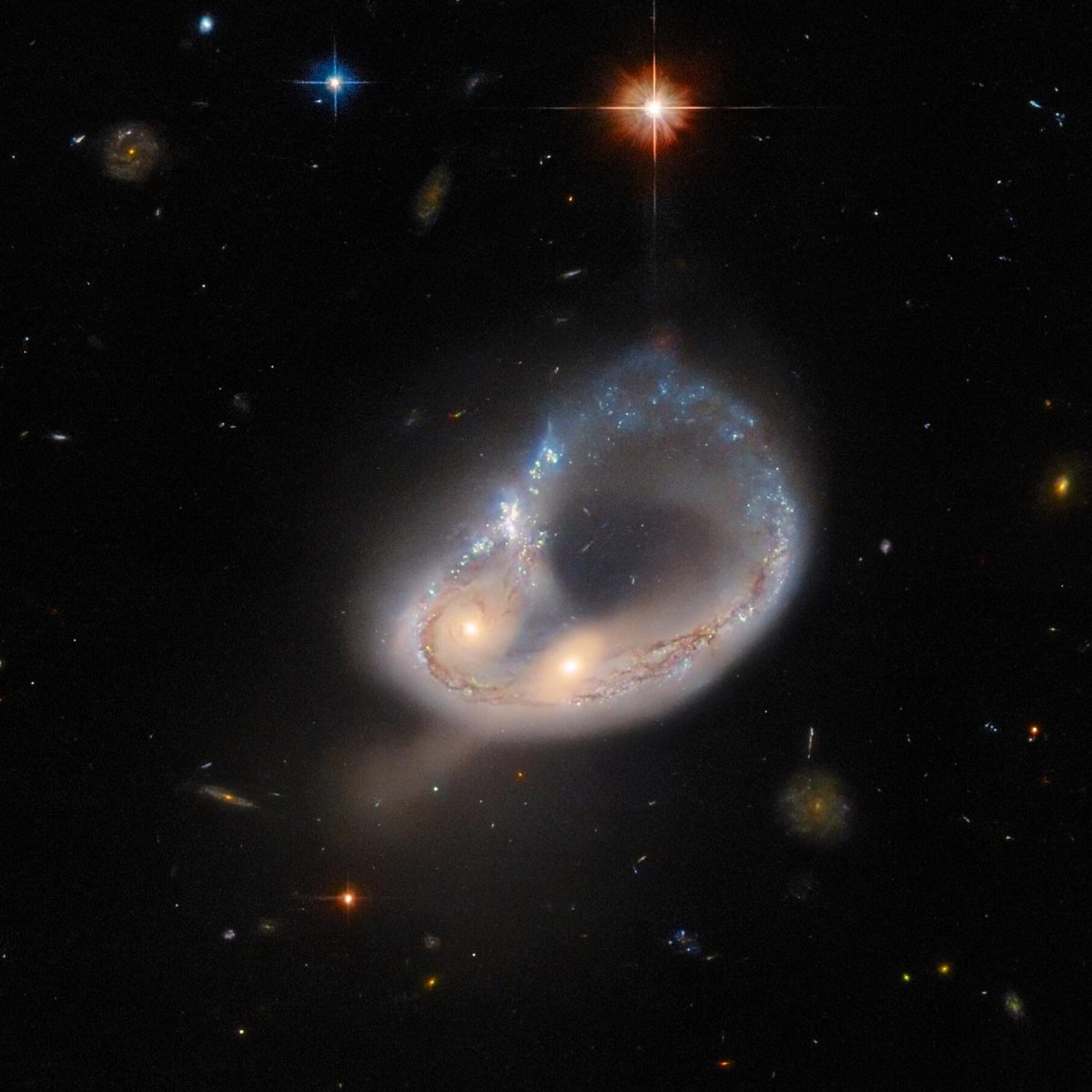Hubble Space Telescope image features the galaxy merger Arp-Madore 417-391, which lies around 670 million light-years away. Credit: ESA/Hubble & NASA, Dark Energy Survey/DOE/FNAL/DECam/CTIO/NOIRLab/NSF/AURA, J. Dalcanton
Stealing the spotlight in this image from the NASA/ESA Hubble Space Telescope is the galaxy merger Arp-Madore 417-391. The Arp-Madore catalogue is a compilation of particularly peculiar galaxies spread throughout the southern sky. It includes a collection of subtly interacting galaxies as well as more spectacular colliding galaxies.
Arp-Madore 417-391 is one such galactic collision. It is located approximately 670 million light-years away from Earth in the constellation Eridanus in the southern celestial hemisphere. The two galaxies have been distorted by gravity and twisted into a colossal ring, leaving the cores of the two galaxies nestled side by side.

Cropped Hubble Space Telescope view of the galaxy merger Arp-Madore 417-391. Credit: ESA/Hubble & NASA, Dark Energy Survey/DOE/FNAL/DECam/CTIO/NOIRLab/NSF/AURA, J. Dalcanton
Hubble used its Advanced Camera for Surveys (ACS) to capture this scene — the instrument is optimized to hunt for galaxies and galaxy clusters in the ancient Universe. Hubble’s ACS has been contributing to scientific discovery for 20 years, and throughout its lifetime it has been involved in everything from mapping the distribution of dark matter to studying the evolution of galaxy clusters.
This image comes from a selection of Hubble observations designed to create a list of intriguing targets for follow-up observations with the NASA/ESA/CSA James Webb Space Telescope, as well as other ground-based telescopes. Astronomers chose a list of previously unobserved galaxies for Hubble to inspect between other scheduled observations. Over time, this lets astronomers build up a menagerie of interesting galaxies while using Hubble’s limited observing time as fully as possible.
Share your story or advertise with us: Whatsapp: +2347068606071 Email: info@newspotng.com










